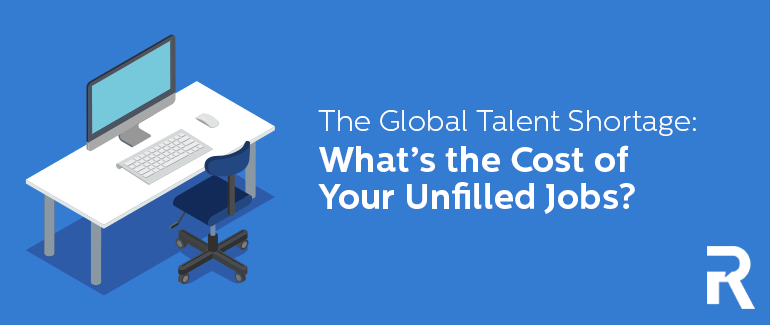
ManpowerGroup, a worldwide workforce agency, recently reported that 36 percent of global employers reported difficulty filling their jobs—the highest percentage in seven years.
The report further showed how the talent shortage is affecting company’s bottom lines. Over half (54 percent) of those surveyed said the shortage has had a medium or high impact on their ability to meet client needs.
Which makes a lot of sense when you look at who they’re trying to hire. Surveyed employers reported professionals, including skilled trade workers, engineers, technicians and sales professionals, were hard to fill. Followed by roles in management, IT support and transportation.
Talent is a key driver to meeting your business objectives. You rely on employees to produce results and serve your clients. That means every day you leave a position unfilled, it costs your business money.
When a job stays vacant, you can’t adequately serve your clients. You notice a reduced competitiveness and productivity in the workplace. And you see how a talent shortage can affect staff turnover. These are all costly impacts reported by businesses.
Most global companies aren’t taking initiatives to solve their talent shortages—which means you will have a competitive advantage when you take proactive steps toward filling the talent gap.
One in ten of the employers who reported talent shortages said they’re shifting their focus to a candidate pipeline. They’re using easy-apply tools, like a talent community, to collect potential applicants and build relationships for future hiring needs.
A quarter of respondents said they’re currently looking for new talent sources by recruiting from underutilized talent pools. One solution is to create a separate employment experience that links from your corporate site—enabling you to target a different audience of potential candidates.
Almost half (47 percent) of employers said they’re tackling talent shortages by developing the existing employees they have on staff. They’re offering additional training and growth programs to their current team, so they can can develop great people to move up within the organization.
Bridging the talent gap won’t happen overnight. Instead, it will take preparation, persistence and patience if you want to overcome a talent shortage. Start relying on strategies like a candidate pipeline, an employment brand and employee development, so you can meet the ever-growing demand for great candidates.